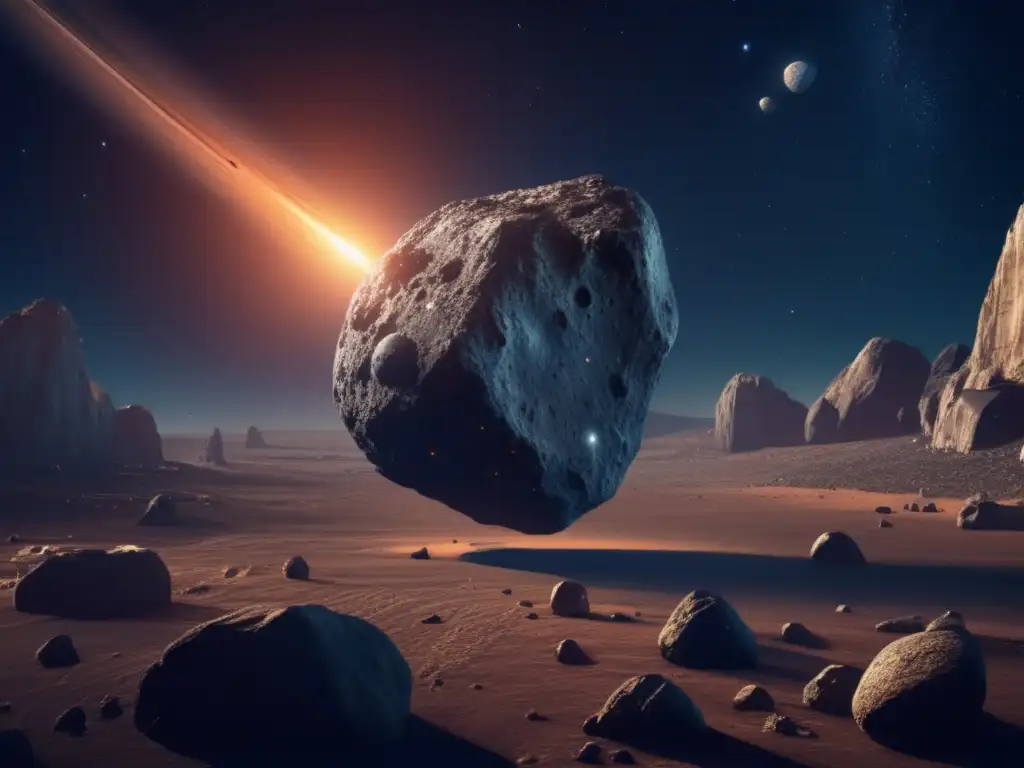Exploring The History Of Asteroid Laetitia

Introduction
Asteroids have long captivated the human imagination with their mysterious origins and celestial presence. One such asteroid that has grabbed the attention of astronomers and enthusiasts alike is Asteroid Laetitia. In this article, we will delve into the history and significance of this intriguing space rock, uncovering its secrets and shedding light on its impact on our understanding of the cosmos.
The Discovery of Asteroid Laetitia

Laetitia: A Celestial Beauty
Asteroid Laetitia was discovered on February 8, 1851, by the distinguished French astronomer Jean Chacornac at the Marseille Observatory. Named after the Roman goddess of joy and happiness, Laetitia, this asteroid measures approximately 112 kilometers in diameter and orbits the Sun in the main asteroid belt between Mars and Jupiter.
The Significance of Laetitia's Orbit
Laetitia follows a moderately eccentric orbit, taking around 4.38 years to complete a single revolution around the Sun. Its orbital inclination of 10.72 degrees adds an interesting dynamic to its movement within the asteroid belt, making it an object of scientific interest for astronomers studying celestial mechanics.
Physical Characteristics of Laetitia
Although the physical characteristics of Laetitia are still being investigated, spectroscopic studies suggest that it belongs to the S-type category of asteroids. This classification indicates a composition primarily composed of silicate minerals, including pyroxenes and olivines. The surface of Laetitia is likely to be rich in various elements and compounds, providing valuable insight into the early formation of the solar system.
Laetitia's Cultural Significance

Mythological Associations
In ancient Roman mythology, Laetitia was revered as the goddess of joy, gaiety, and celebration. Her presence was often invoked during festive occasions and rituals, bringing happiness and harmony to those who worshipped her. The naming of Asteroid Laetitia not only pays homage to this deity but also serves as a reminder of the interconnectedness between celestial bodies and human beliefs.
Astronomical Impact
Laetitia's discovery and subsequent study have contributed significantly to our knowledge of asteroids and their role in the formation and evolution of the solar system. By analyzing its composition and orbital characteristics, scientists have gained insights into the early processes that shaped our cosmic neighborhood.
Observational Opportunities
Due to its relatively large size and proximity to Earth, Laetitia offers an excellent opportunity for amateur astronomers to observe and study an asteroid of significant scientific value. With the aid of telescopes, enthusiasts can explore its surface features and gain a deeper understanding of the geological processes that have shaped it over billions of years.
Unveiling the Future of Laetitia

Potential for Exploration
As humanity advances in space exploration, the potential for missions to asteroids like Laetitia becomes more tangible. The detailed study of these celestial objects holds promise for uncovering crucial information about the origins of our solar system and even providing resources for future space endeavors.
Scientific Investigations
Continued research on Laetitia will further refine our understanding of its composition, structure, and behavior. Scientists will use advanced instruments and techniques to delve deeper into its mysteries, allowing us to paint a more comprehensive picture of this fascinating asteroid.
Protecting Earth from Asteroids
Studying asteroids like Laetitia is not only intellectually stimulating but also crucial for our planetary defense efforts. By unraveling the composition and properties of these space rocks, scientists can enhance our ability to detect, track, and mitigate potential asteroid threats to Earth.
Frequently Asked Questions

-
What is the size of Asteroid Laetitia?
Asteroid Laetitia has an estimated diameter of approximately 112 kilometers.
-
What is known about the composition of Laetitia?
Laetitia is classified as an S-type asteroid, suggesting a composition rich in silicate minerals.
-
What is the significance of Laetitia's orbit?
Laetitia's moderately eccentric orbit and inclination provide valuable insights into celestial mechanics within the asteroid belt.
-
Why was Asteroid Laetitia named after the Roman goddess?
The name Laetitia was chosen to honor the Roman goddess of joy and happiness, symbolizing the positive impact of celestial bodies on human culture.
-
What are the future prospects for studying Laetitia?
Future exploration missions and continued scientific investigations hold the potential for uncovering more secrets about this enigmatic asteroid.
Conclusion
Asteroid Laetitia represents a fascinating chapter in the history of asteroid studies. From its discovery to its cultural significance and scientific contributions, this celestial body continues to inspire awe and curiosity. As we venture further into the realms of space exploration, our understanding of asteroids like Laetitia will undoubtedly deepen, opening new avenues of knowledge and exploration. Let us continue to embrace the wonders of the cosmos and strive for a better understanding of our place in the universe.
We encourage you to share your thoughts and insights in the comments section below. Join us in our quest to explore the mysteries of asteroids and stay connected with www.asteroidrealm.com for more captivating articles. Thank you for your time and curiosity!
Additional Resources

For those eager to dive deeper into the world of asteroids, here are some additional resources:
- NASA - Asteroid and Comet Watch
- NASA's Solar System Exploration - Asteroids
- International Astronomical Union - Asteroids
 The Surprising Features Of Asteroid Helio
The Surprising Features Of Asteroid Helio Unraveling The Mysteries Of Asteroid Isolda
Unraveling The Mysteries Of Asteroid Isolda What We Know About Asteroid Eurydike
What We Know About Asteroid EurydikeIf you want to discover more articles similar to Exploring The History Of Asteroid Laetitia, you can visit the Asteroid Profiles category.
Leave a Reply

Articulos relacionados: